Hiring in 2024
It is evident that we are in a candidate-driven labour market. Unemployment rates are low, and job mobility rates are even lower - we are experiencing the strongest labour market since the beginning of the GFC (Source: Indeed).
With candidates in the driver’s seat, companies are fighting for top talent, and the saying, “you snooze, you lose” has never been more relevant for hiring managers. Of course, having criteria is important (especially when certifications are required) but sometimes looking at transferable skills isn't such a bad idea. If you are seeking high-caliber candidates (who are often only passively looking), then you need to entice them to make a move. What is in it for them? What makes your organisation so appealing that they should leave their current role? People are attracted to organisations that align with their values and goals. Employers looking to create a competitive advantage need to facilitate a hiring process that fits the preferences and lifestyles of candidates.
The National Skills Commission reported that job ads are 50% higher than pre-pandemic. Nearly 4 in 10 managers are being “ghosted” by jobseekers, with 42% experiencing candidates withdrawing on offers to opt for better propositions. These statistics highlight that it really is a candidate's market right now.
Did you know that 55% of people in the workforce intend to search for new employment in the next 12 months? As an employer, how can you attract and retain top talent? The answer is simple and mutually beneficial for you and your team. Invest in your staff, and you will reap the benefits. In terms of attracting talent, steer away from lengthy and heavy-tech-based application processes (unless necessary). These are a massive deterrent for candidates, and the hesitancy rates of people applying for jobs are already high. When conducting an initial interview, start by painting a picture of the organisation and its values, rather than the typical “tell me about yourself”. You are there to sell the role to them, so affirm to the candidate the business context.
Communication & transparency
Be upfront about career progression (or lack of it) in the role. Being approachable as a manager is essential. Clearly define the role and expectations, have employee check-in procedures in place, and provide constructive and personalised feedback on a regular basis.
Prioritise mental health and wellbeing
When trying to attract new talent, offering flexible working schedules is becoming a bestseller for businesses. Gone are the days of 9-5 in the office every single day. There is no "one size fits all" approach to what defines 'flexibility'. Some examples include allowing your employees to start later if they need to drop their children at school or leave early to attend appointments. Depending on the nature of work, sometimes a compressed workweek or customised hours can also be an option. This means your employees can work an unequal distribution of hours to reduce the number of working days. The most common “flexible” working arrangement seems to be the hybrid working model – working 1-3 days per week from home and the remainder in the office.
Also, look at offering additional benefits such as smart casual dress on Fridays, end of week social event or designated wellness areas in the office. Managers need to look out for signs of employee burnout. Incorporate fun and wellbeing sessions to maintain engagement and productivity.
Speed to hire
Flexibility and speed are key! Taking three months to find the perfect candidate means that you may have lost business; you could have used this time to train a junior that didn’t tick 10/10 boxes but is now excelling in their role. Move quickly on resumes and take onboard your recruiters' feedback and guidance. This is a very different market, so old ways of hiring are obsolete. Hire on attitude and train on skills!
Sell
In this market, the candidate is interviewing YOU. Bring your A-game and show them how great you and your company are to work for. Present your office nicely, highlight the company values and give interview feedback on the same day.
It is a fact that high-calibre candidates don't tend to apply for jobs but will show up passively in the market. This is where using a recruitment agency to headhunt becomes essential.



